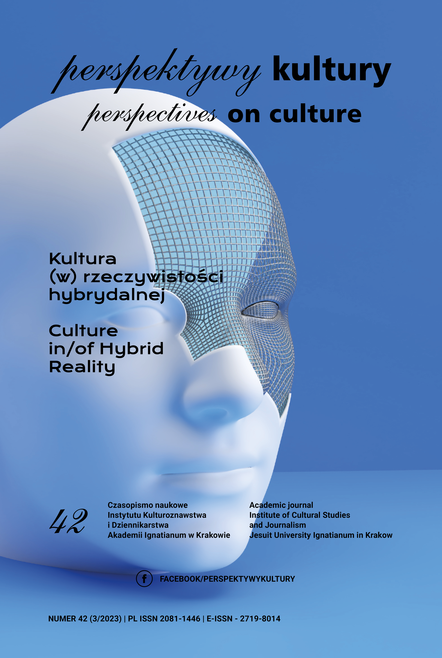A Linguistic Analysis of Sexism-Related Hate Speech in Social Media
Abstract
The aim of this article is to present the functioning of a dual algorithm/human analysis and to investigate the means with which to study hate speech, especially sexism-related hate speech, in the online environment, focusing on social media comments and hashtags. Another aim is to investigate new linguistic trends in contemporary online hate speech that can be revealed via quantitative hate speech analysis. In the first part, the concept of hate speech is briefly introduced in a linguistic context. In the second part, an example of a Twitter hashtag is analyzed. In the third part, an algorithm for the identification of sexism-related hate speech from the corpus available at hatespeechdata.com is discussed. The article demonstrates the methods of evaluating selected types of online content for the presence of hate speech. It is made evident that algorithm-based hate speech qualification is an insufficient tool for identifying hate speech and that qualitative analysis by a trained linguist is necessary.
References
Assimakopoulos, S., Baider, F. H., & Millar, S. (eds.). (2017). Online hate speech in the European Union: A discourse-analytic perspective. Springer.
Caleffi, P.-M. (2015). The “hashtag”: A new word or a new rule? SKASE Journal of Theoretical Linguistics, 12(2), 46–69.
Carlson, C.R. (2021). Hate speech. MIT Press.
ElSherief, M., Kulkarni, V., Nguyen, D., Yang Wang, W., & Belding, E. (2018). Hate lingo: A target-based linguistic analysis of hate speech in social media. University of California. Retrieved from: https://arxiv.org/pdf/1804.04257.pdf (access: 25.02.2023).
Framework decision on combating certain forms and expressions of racism and xenophobia by means of criminal law. 2008/913/JHA of 28 No-vember 2008. Eur-lex. (2014). Retrieved from: https://eur-lex.europa.eu/legal-content/EN/TXT/?uri=LEGISSUM%3Al33178. (access: 21.02.2023).
Hatespeeechdata.com (2021). Retrieved February 21, 2023.
Kibort, A. (2010). A typology of grammatical features. Grammaticalfea-tures.net. Retrieved from: http://www.grammaticalfeatures.net/inventory.html (access: 25.02.2023).
Nieto, V.G. (2022). Hate speech: Linguistic approaches. De Gruyter.
Pejchal, V. (2020). Hate speech and human rights in Eastern Europe: Leg-islating for divergent values. Routledge.
Rasinger, S. (2018). Quantitative research in linguistics: An introduction (2nd Ed.). Bloomsbury.
Romano, A. (2015, May 5). Sexist #HowToSpotAFeminist hashtag is re-claimed by feminists on Twitter. Mashable. Retrieved from: https://mashable.com/2015/05/05/how-to-spot-a-feminist (access: 25.02.2023).
Scott, K. (2018). “Hashtags work everywhere”: The pragmatic functions of spoken hashtags. Discourse, Context & Media, Vol. 22, 57–64.
Statista.com (2021).
UNSPAHS. (2019). United Nations strategy and plan of action on hate speech. Retrieved from: https://www.un.org/en/genocideprevention/documents/UN%20Strategy%20and%20Plan%20of%20Action%20on%20Hate%20Speech%2018%20June%20SYNOPSIS.pdf (access: 10.01.2023).
Zappavigna, M. (2015). Searchable talk: The linguistic functions of hashtags. Social Semiotics, 25(3), 2–4.
Copyright (c) 2023 Perspectives on Culture

This work is licensed under a Creative Commons Attribution-NoDerivatives 4.0 International License.
Autor, zgłaszając swój artykuł, wyraża zgodę na korzystanie przez Wydawnictwo Uniwersystet Ignatianum z utworu na następujących polach eksploatacji:
- utrwalania utworu w formie papierowej, a także na nośniku cyfrowym lub magnetycznym;
- zwielokrotnienia utworu dowolną techniką, bez ograniczenia ilości wydań i liczby egzemplarzy;
- rozpowszechniania utworu i jego zwielokrotnionych egzemplarzy na jakimkolwiek nośniku, w tym wprowadzenia do obrotu, sprzedaży, użyczenia, najmu;
- wprowadzenia utworu do pamięci komputera;
- rozpowszechniania utworu w sieciach informatycznych, w tym w sieci Internet;
- publicznego wykonania, wystawienia, wyświetlenia, odtworzenia oraz nadawania i reemitowania, a także publicznego udostępniania utworu w taki sposób, aby każdy mógł mieć do niego dostęp w miejscu i czasie przez siebie wybranym.
Wydawca zobowiązuje się szanować osobiste prawa autorskie do utworu.





